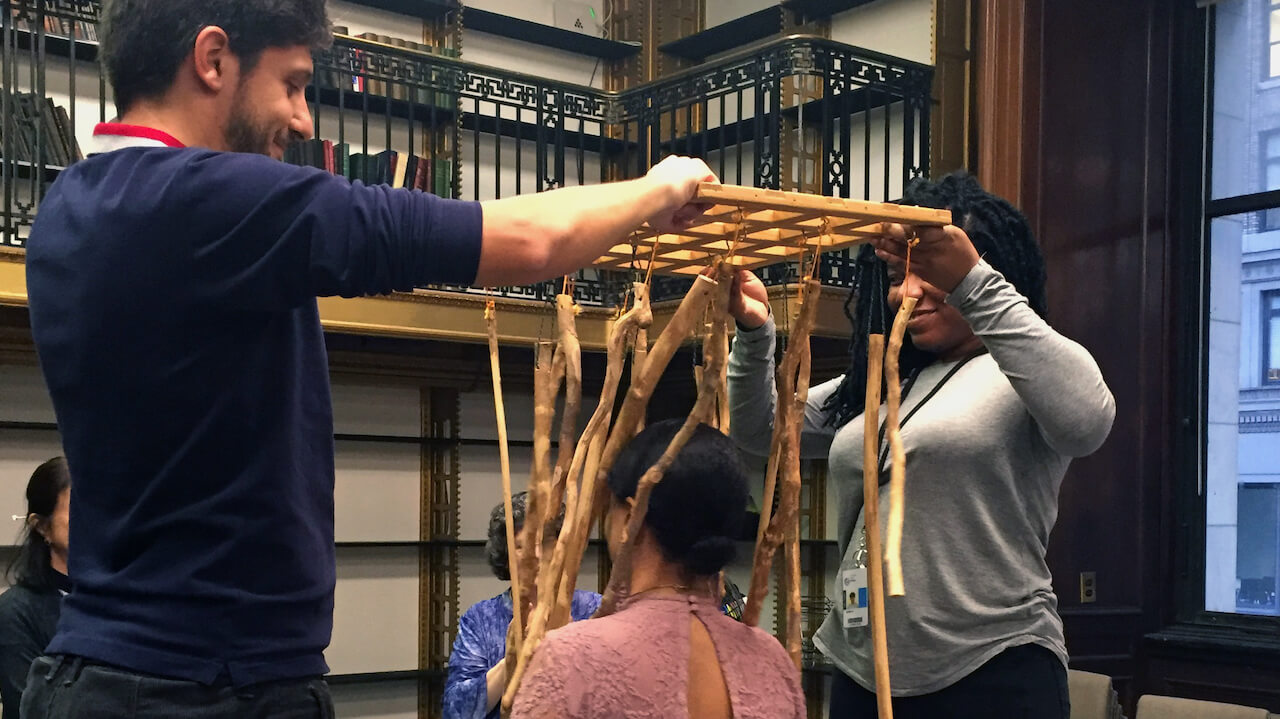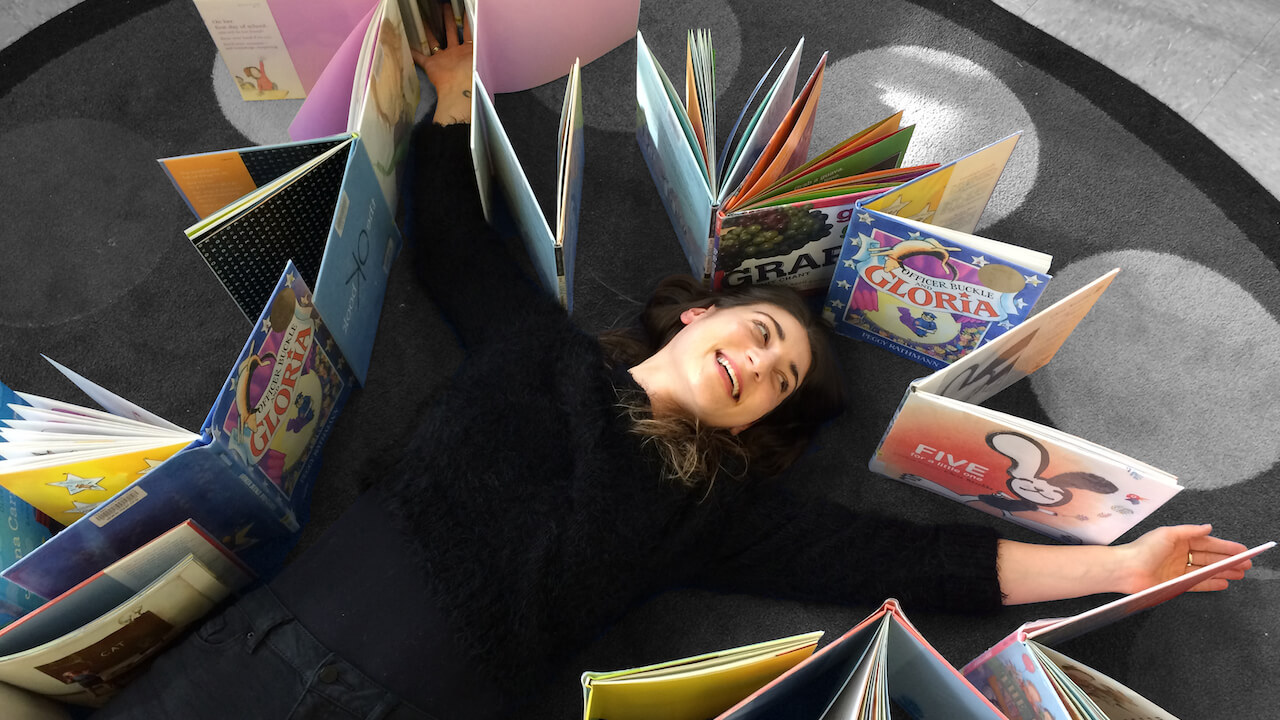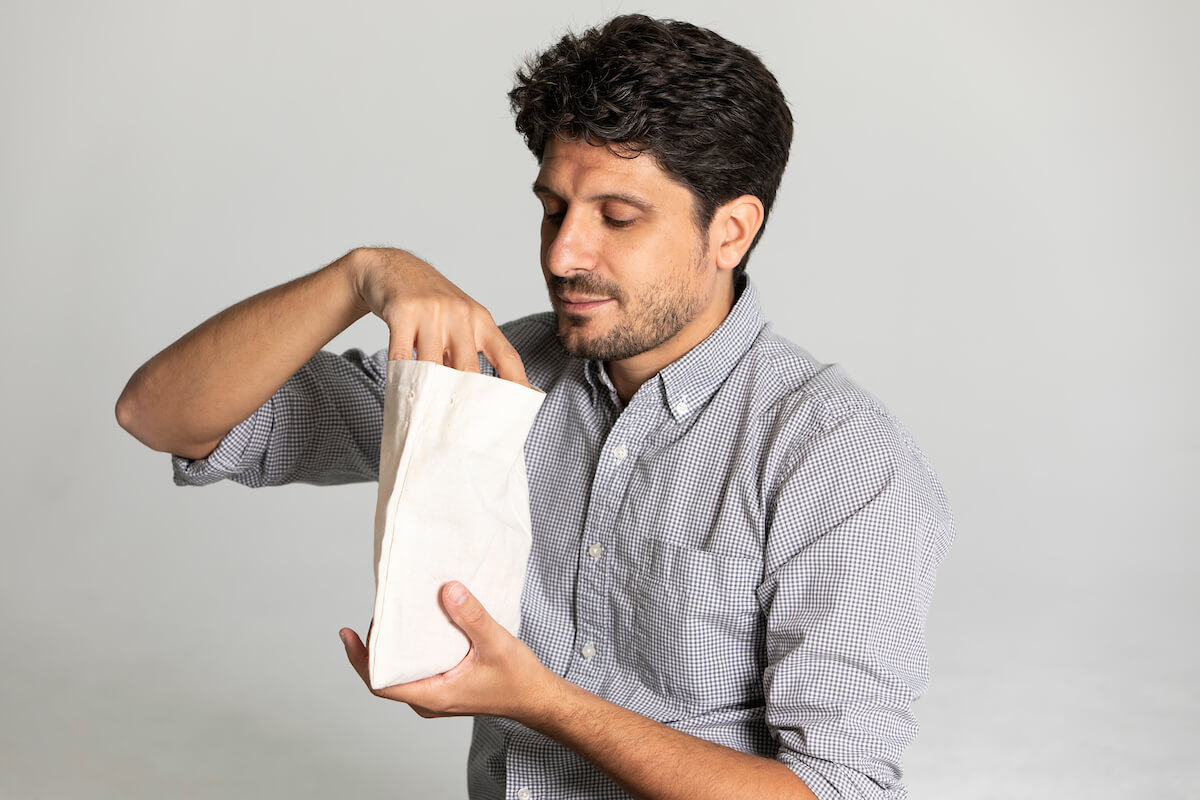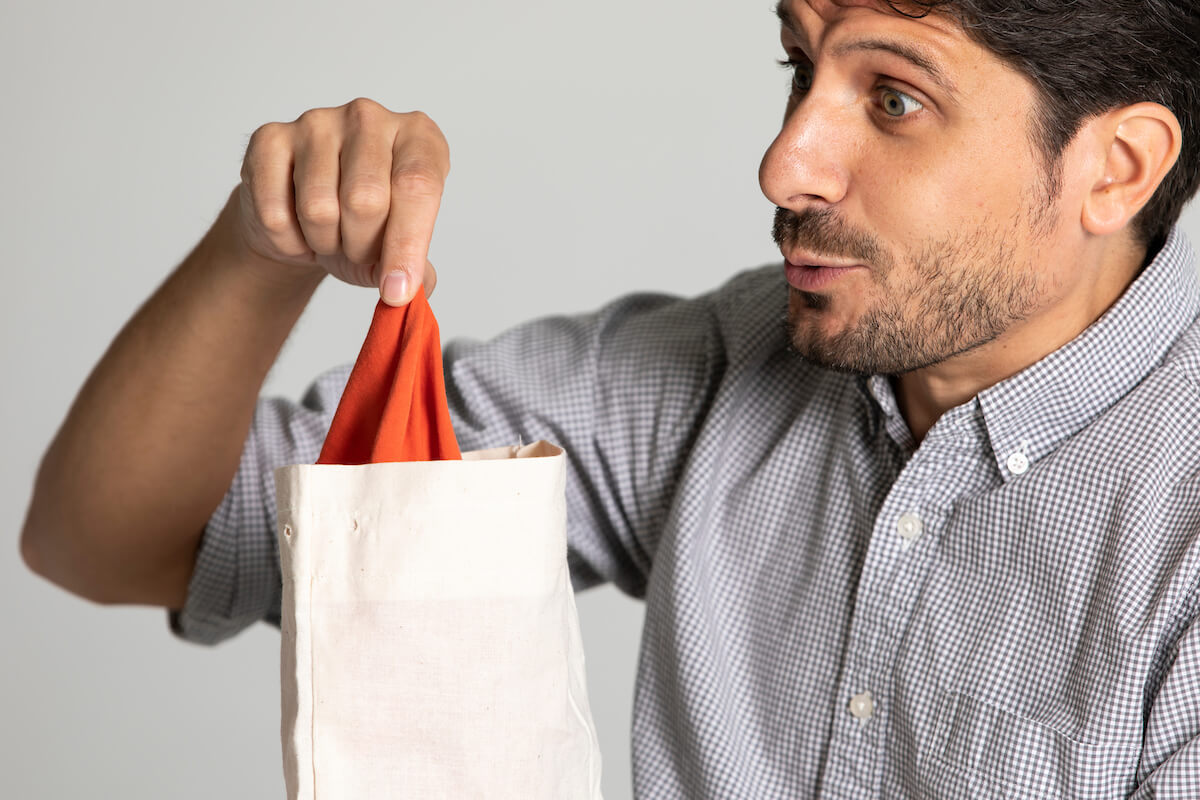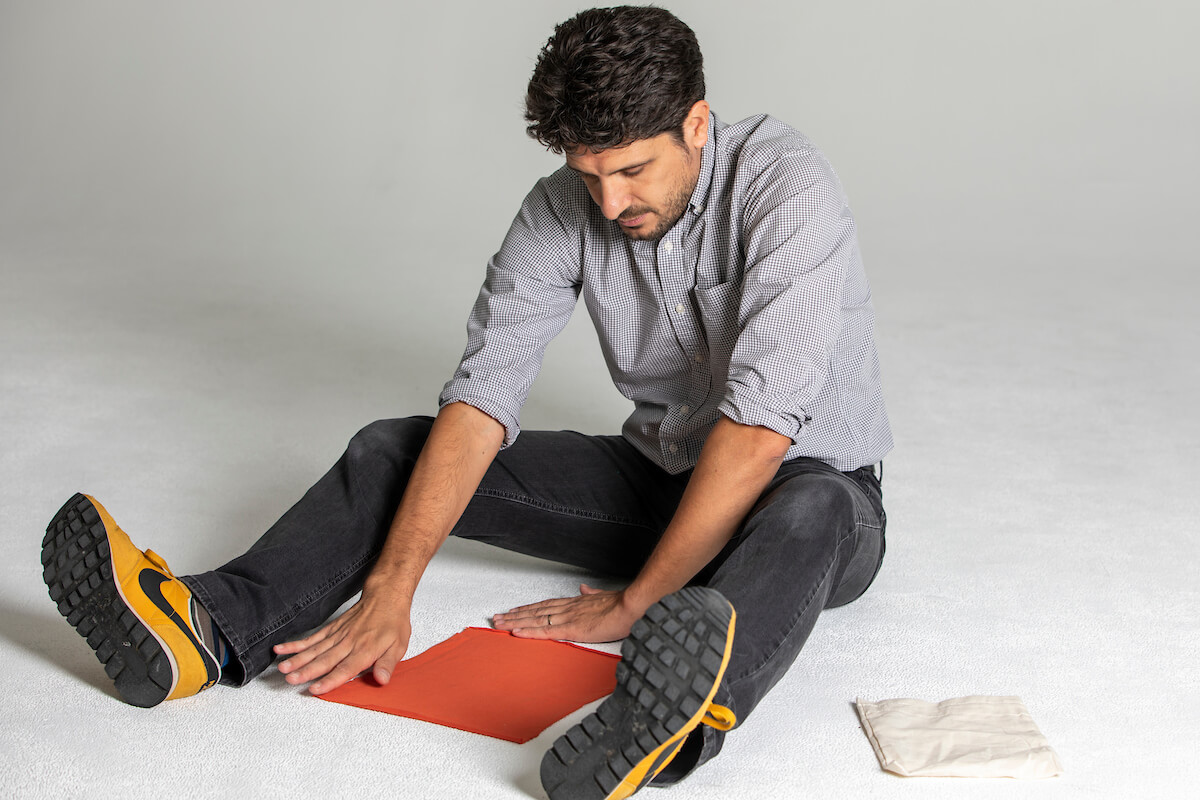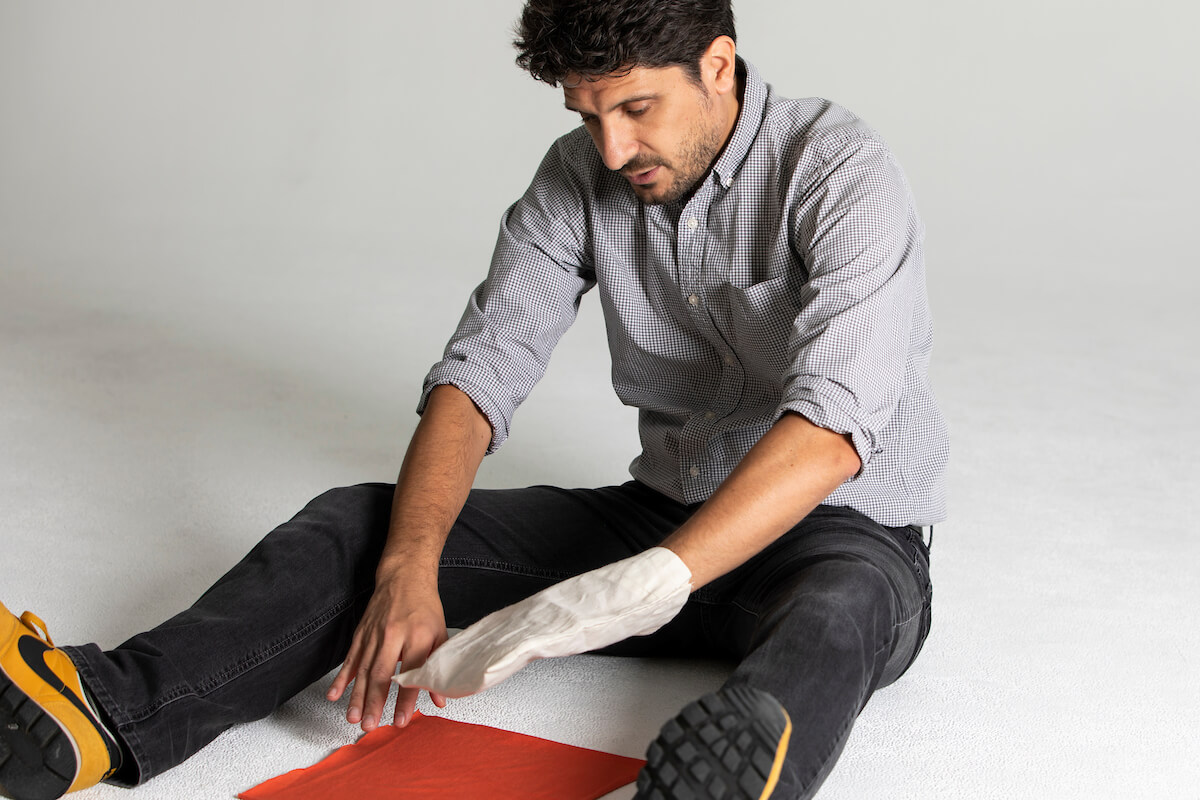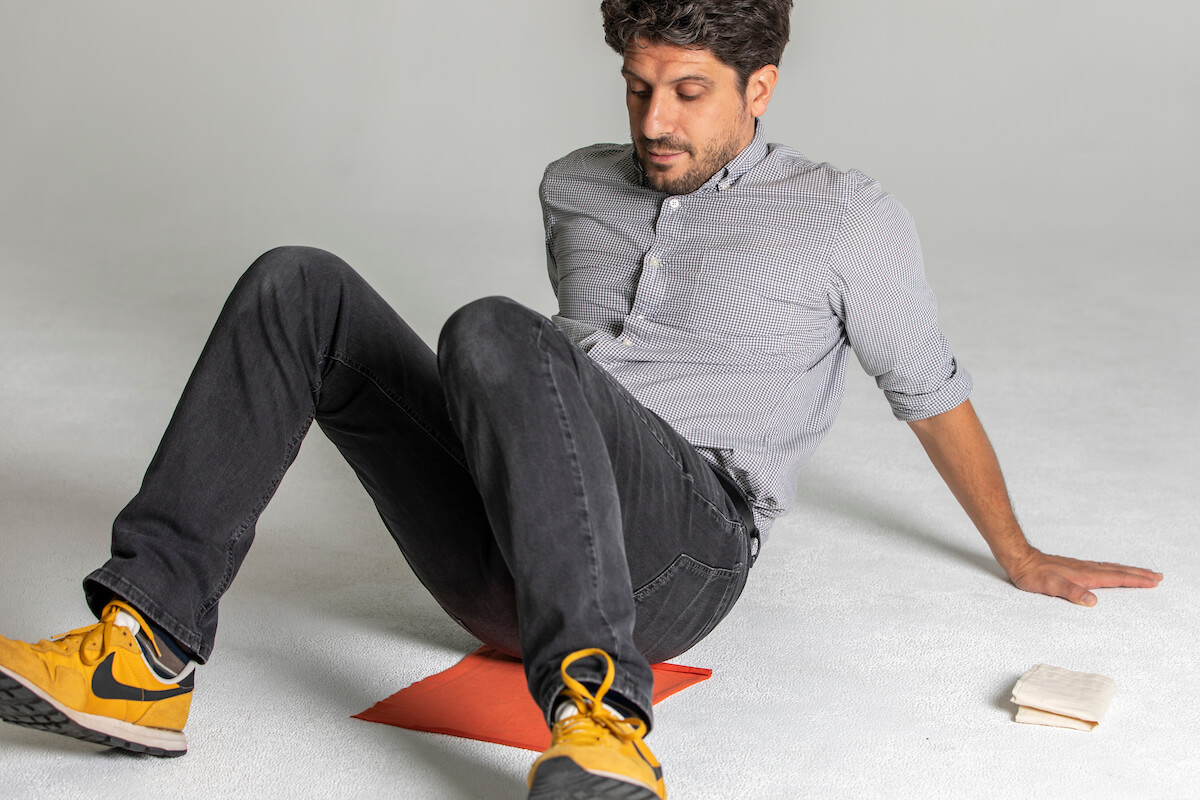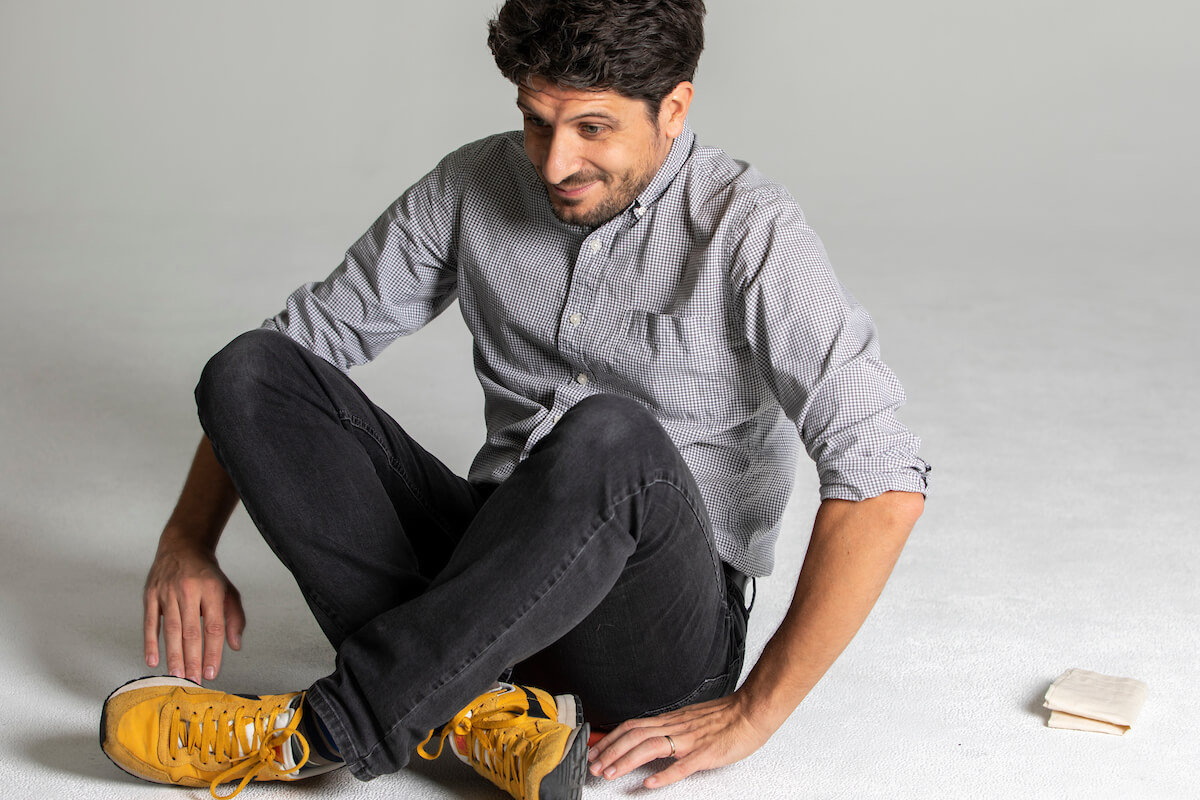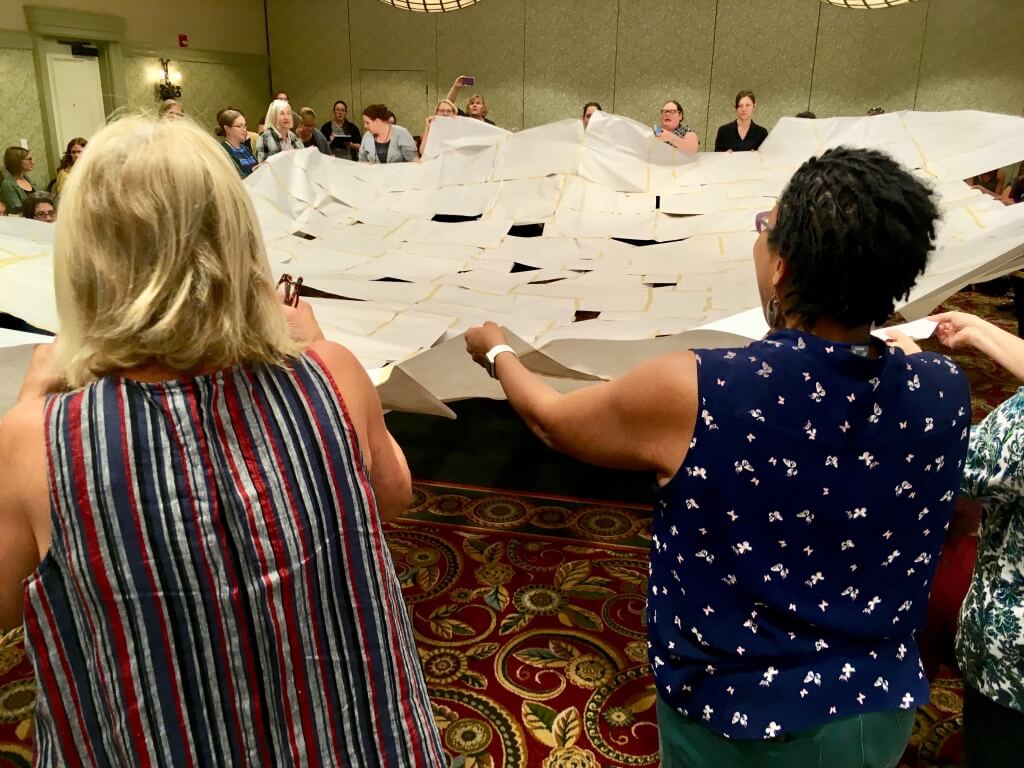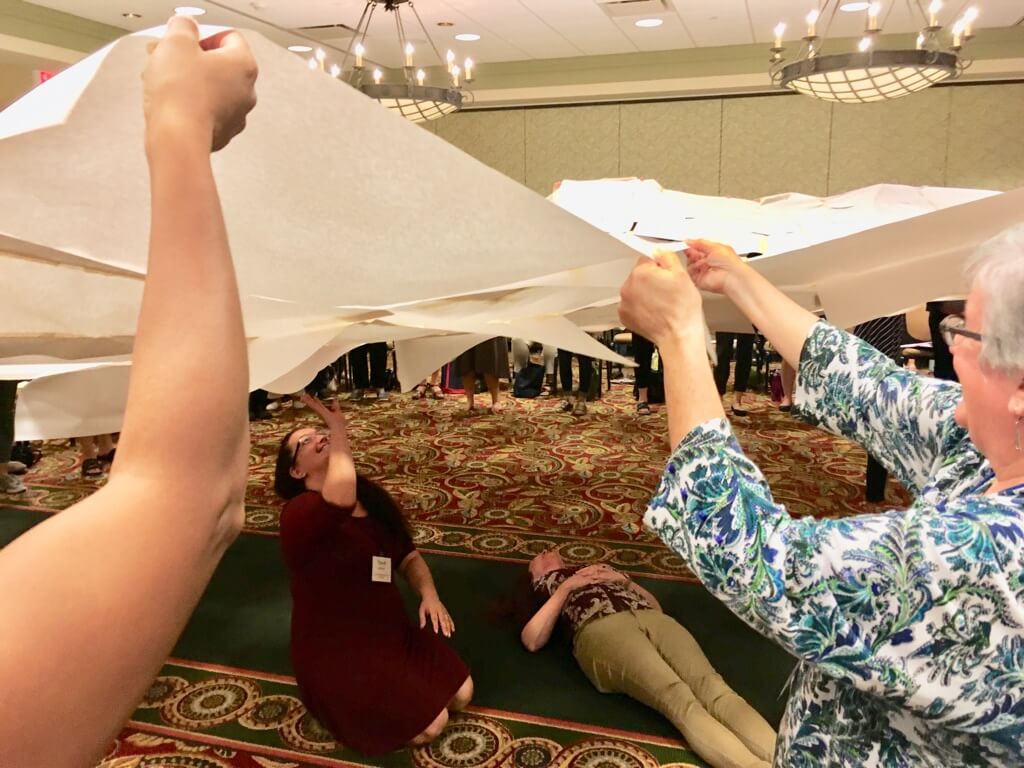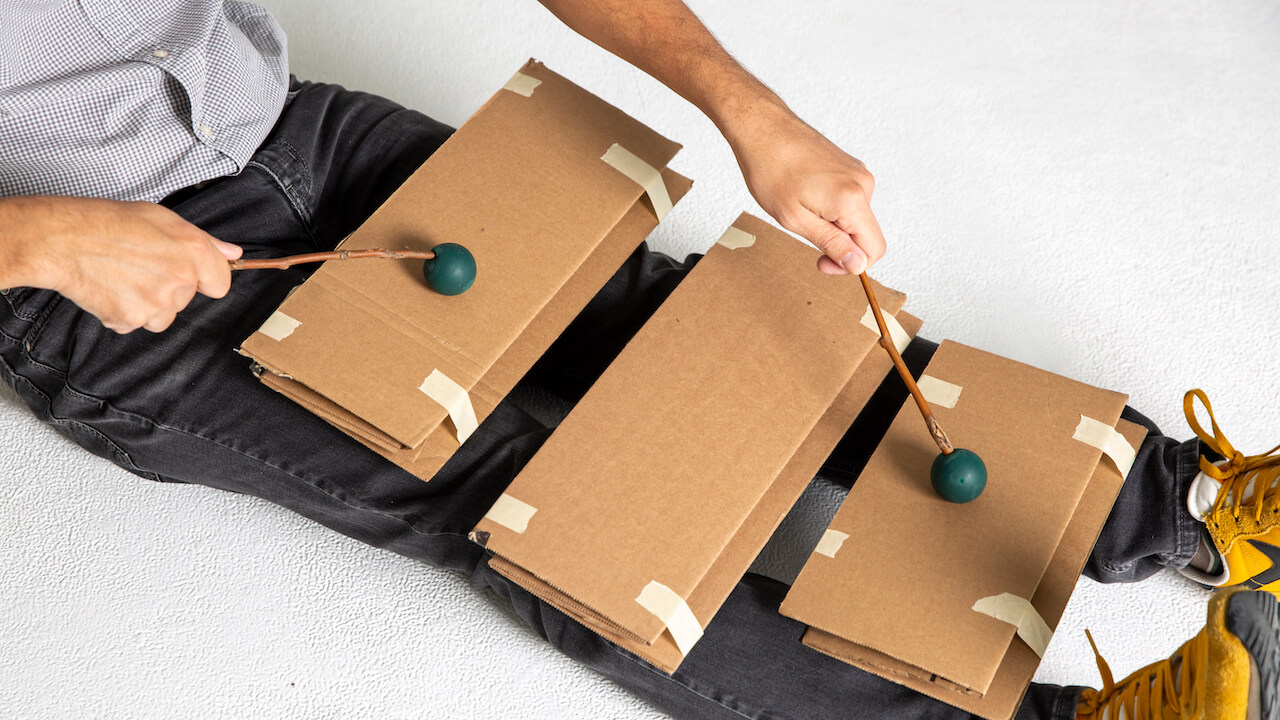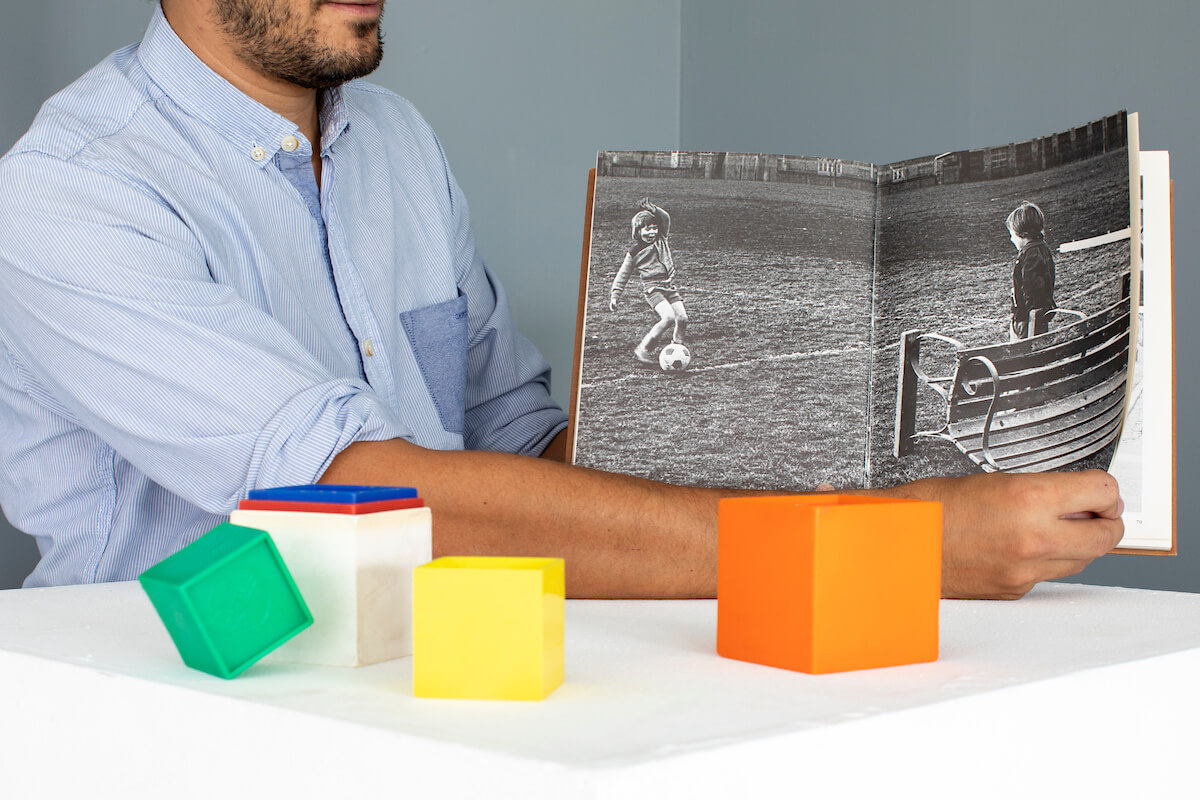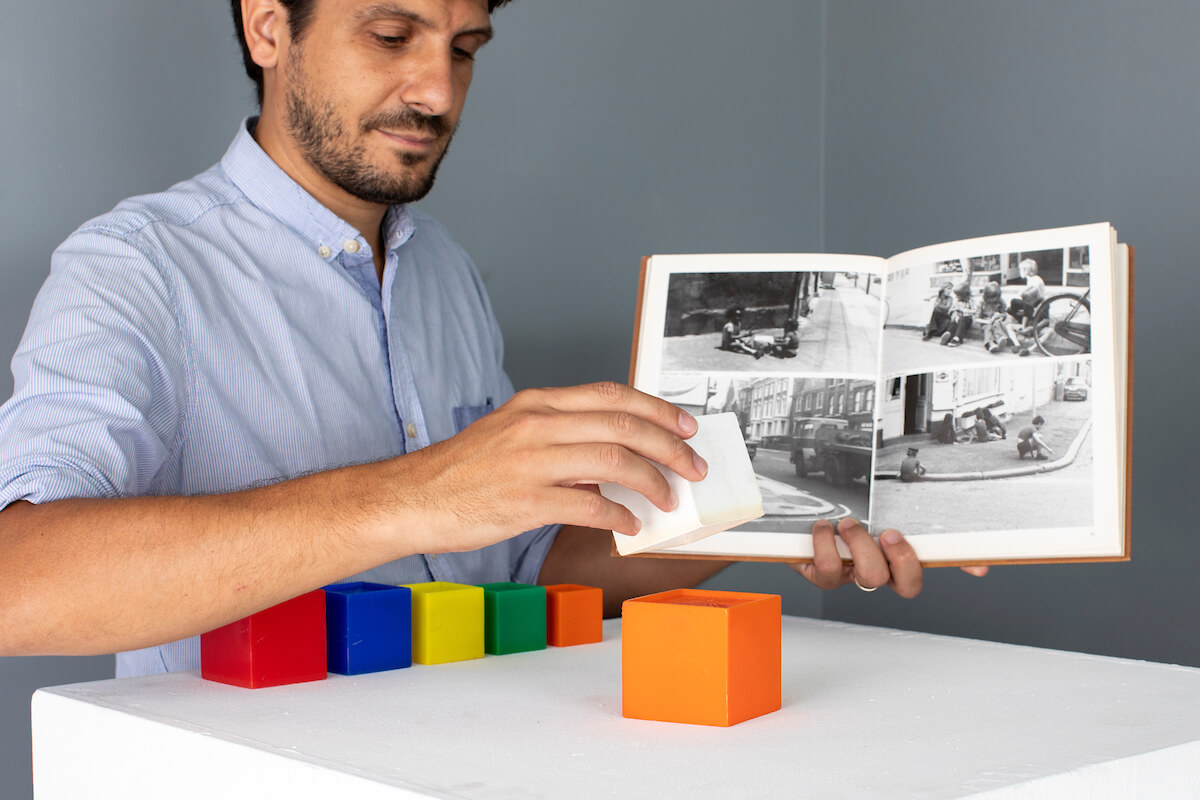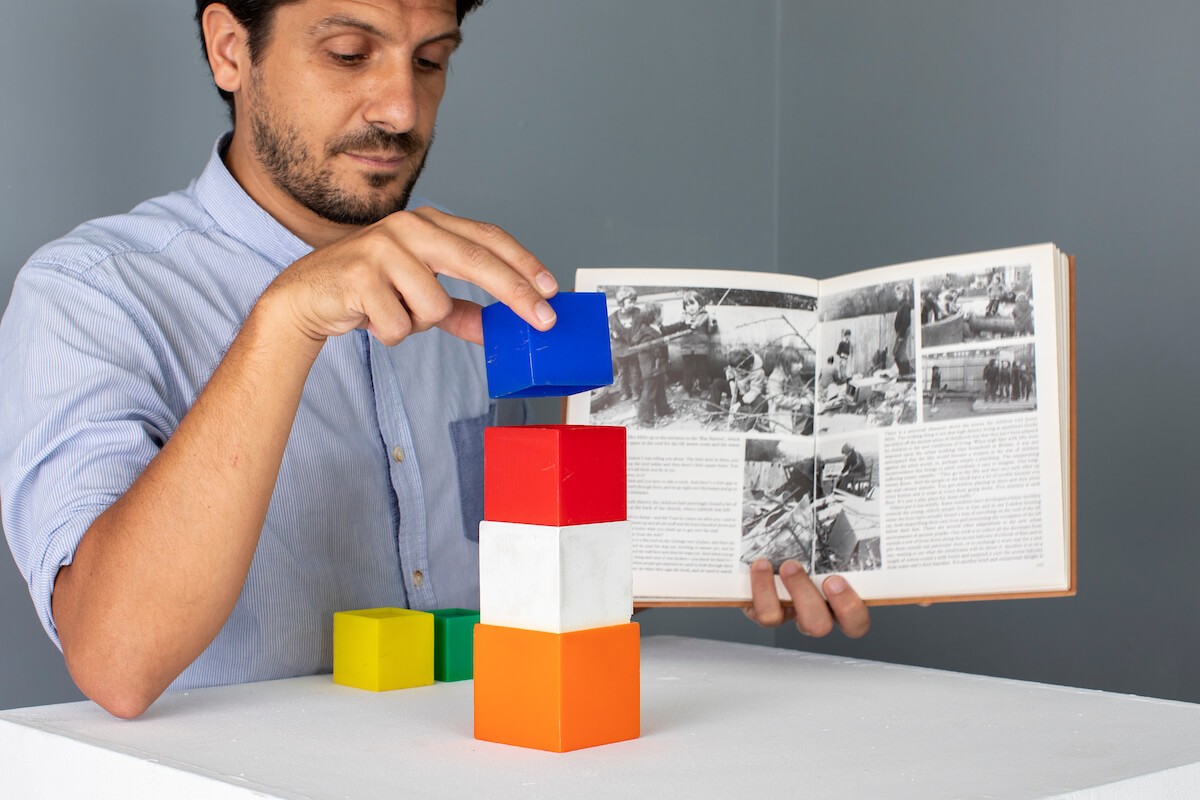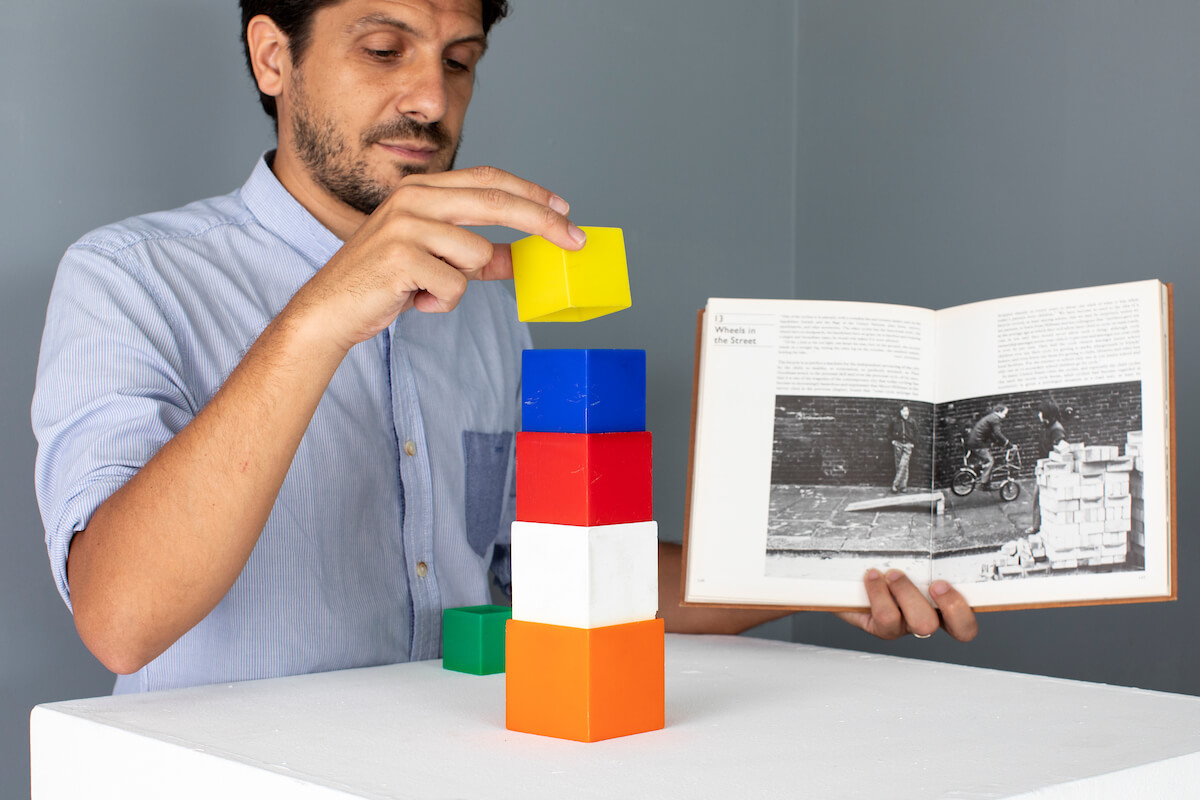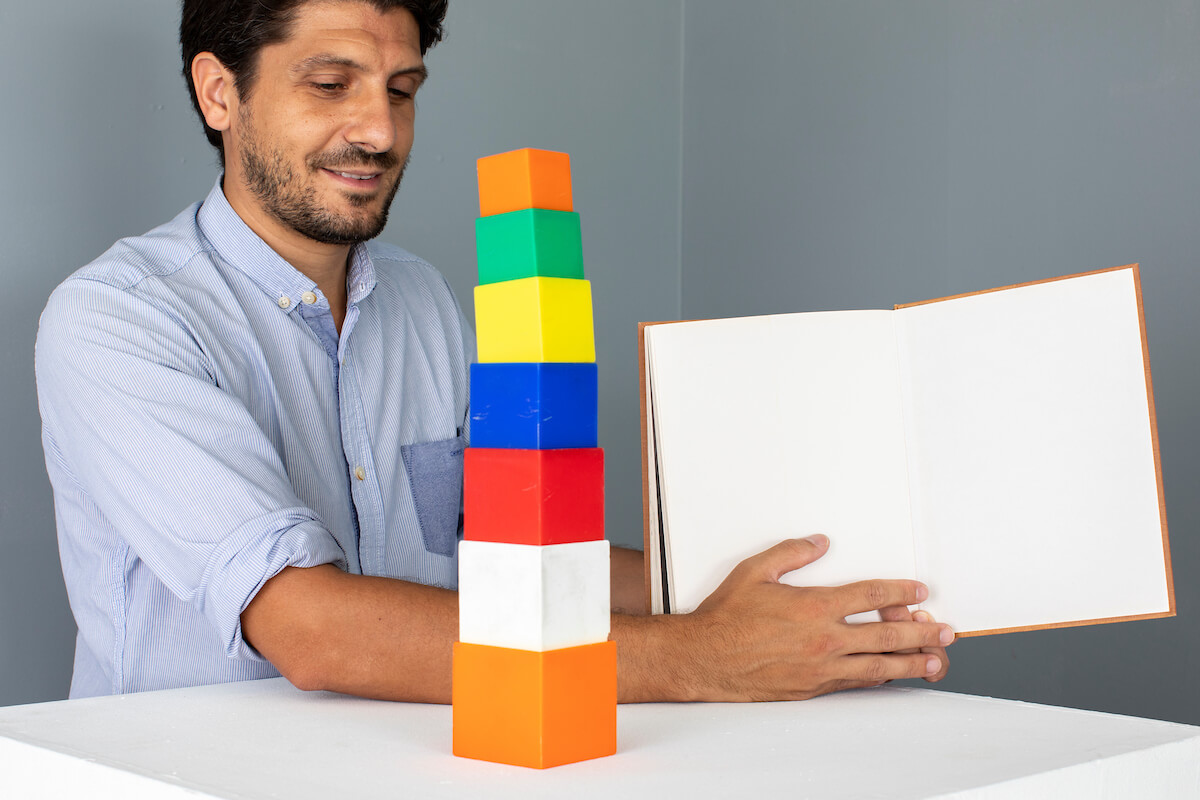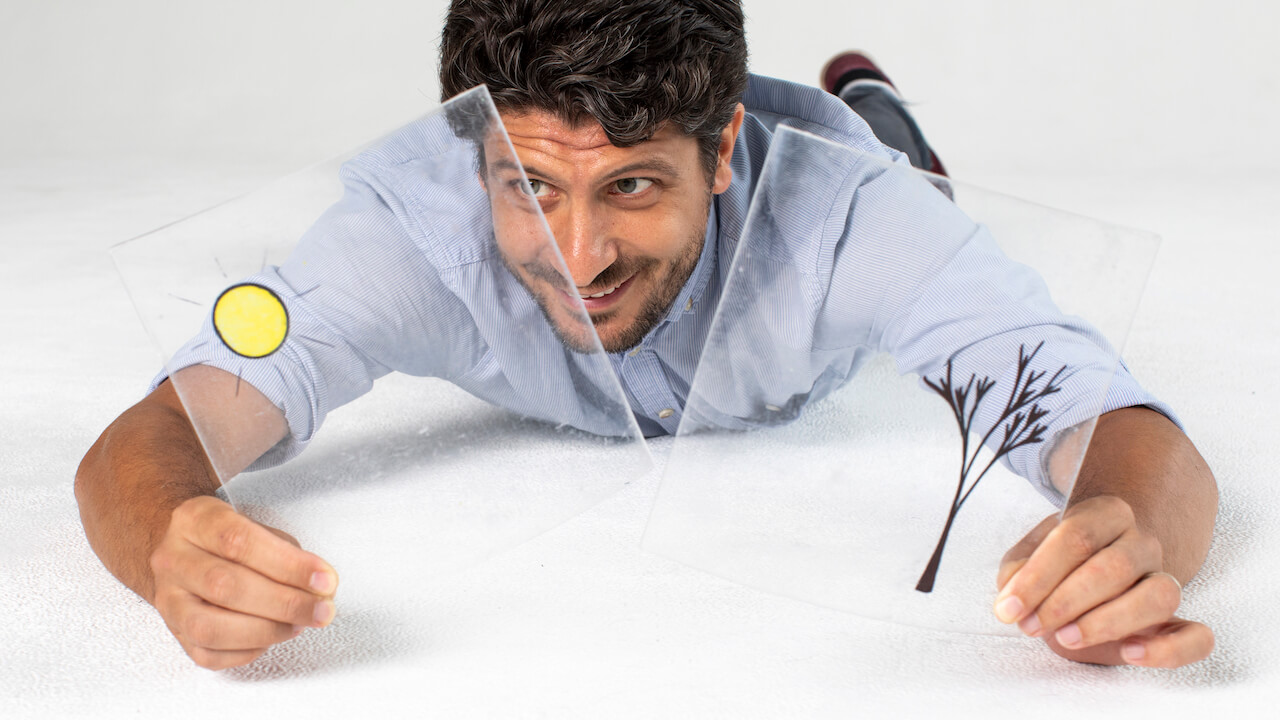How do I make Storytime Inclusive?
This article shows how children’s librarians can create Inclusive Storytime programs and inclusive group activities in their library
Children’s Rooms.
1. Inclusive Environment and Storytime
For children’s librarians, the design of a new inclusive storytime program begins with creating a welcoming, safe environment by keeping all children in mind.
You want every child to develop a positive sense of belonging to that space, to the group of participating patrons, and to the story you’re about to tell.
2. Inclusive Storytime and Overstimulation
In the digital age, children are often exposed to chaotic overstimulation.
While slight stimuli trigger curiosity and moderate stimuli develop it, stronger stimuli often inhibit such development, and, ultimately, excessive stimuli can destroy it.
The safest environment for an inclusive Storytime avoids strong or excessive stimuli, invites discovery and enjoyment of slight and moderate stimulations.
NYPL children’s librarians experiment with stimuli and overstimulation
3. Preparing a Safe Environment for Inclusive Storytime
In general, before reading, everyone needs to prepare their own physical and emotionally safe space.
Relax. Concentrate. Dispel every other thought. Let the world around you fade. Best to close the door; the TV is always on in the next room.
[…] Find the most comfortable position: seated, stretched out, curled up, or lying flat. Flat on your back, on your side, on your stomach. In an easy chair, on the sofa, in the rocker, the deck chair, on the hassock. In the hammock, if you have a hammock. On top of your bed, of course, or in the bed. You can even stand on your hands, head down, in the yoga position. With the book upside down, naturally. Of course, the ideal position for reading is something you can never find. In the old days, they used to read standing up at a lectern. People were accustomed to standing on their feet without moving. They rested like that when they were tired of horseback riding.
[…] With your feet in the stirrups, you should feel quite comfortable for reading; having your feet up is the first condition for enjoying a read. Well, what are you waiting for? Stretch your legs, go ahead and put your feet on a cushion, on two cushions, on the arms of the sofa, on the wings of the chair, on the coffee table, on the desk, on the piano, on the globe. Take your shoes off first. If you want to, put your feet up; if not, put them back. Now don’t stand there with your shoes in one hand and the book in the other. Adjust the light so you won’t strain your eyes. Do it now, because once you’re absorbed in reading, there will be no budging you. Make sure the page isn’t in shadow, a clotting of black letters on a gray background, uniform as a pack of mice; but be careful that the light cast on it isn’t too strong, doesn’t glare on the cruel white of the paper, gnawing at the shadows of the letters as in a southern noonday. Try to foresee now everything that might make you interrupt your reading. Cigarettes within reach, if you smoke, and the ashtray. Anything else? Do you have to pee? All right, you know best.
[…] Now. Yes, you are in your room, calm; you open the book to page one, no, to the last page, first you want to see how long it is. It’s not too long, fortunately.
[…] You turn the book over in your hands, you scan the sentences on the back of the jacket, generic phrases that don’t say a great deal. So much the better, there is no message that indiscreetly outshouts the message that the book itself must communicate directly, that you must extract from the book, however much or little it may be. Of course, this circling of the book, too, this reading around it before reading inside it, is a part of the pleasure in a new book, but like all preliminary pleasures, it has its optimal duration if you want it to serve as a thrust toward the more substantial pleasure of the consummation of the act, namely the reading of the book. So here you are now, ready to attack the first lines of the first page.
In If on a winter’s night a traveler (1979) introductory chapter, Italo Calvino shares habits of human behavior that can help you, a children’s librarian, to envision the incredible variety of approaches to the reading experience of your library patrons.
Think of your audience now, then go back to Calvino’s quote: how many times have you seen young patrons curled up or lying flat? How many times have you thought, “If I had a cushion, two cushions,” or “If they only could take their shoes off!” Certainly, “the ideal position for reading is something you can never find.” Still, everyone deserves to get as close as possible to a posture that feels very comfortable for reading, reading out loud, or “listening to Storytime” – in particular, the young patrons we, you, and your library system, want to support in their physical and social-emotional development.
4. Inclusive Storytime and Transitions
Every person’s body has a unique way of being comfortable, and physical comfort is often also emotional comfort. Before Storytime begins, every young patron, along with their caregivers — particularly those new to a program — experiences a series of transitions that may influence their behavior and reactions.
Transitions are also a part of the environment children’s librarians need to be aware of.
NYPL children’s librarian Andrea Grassi works on Inclusive Storytime environments
Entering an unknown building; taking an elevator or climbing stairs; meeting new children and adults; managing the excitement of their caregiver; trying to make sense of the situation and the physical space; following some new rules; listening to too many suggestions or commands voiced by the adults. Children in libraries are exposed to these and many more transitions. Clearly, after all these events, young patrons need some time to rest, reflect, and get organized autonomously.
Therefore, the time before Storytime is when the success of your program begins. Make sure children at the library enjoy some physical and emotional rest as soon as they arrive. Don’t pressure them with over-excited greetings and cheering. Give them time to join you and your environment.
5. Inclusive Storytime and Opening Rituals. The Importance of Body Language
Try to welcome families and caregivers first as they arrive at the children’s section: the little ones may be already overwhelmed at that point. Families and chaperons make Storytime a successful event simply by coming to the library with their kids. They deserve your attention and a warm welcome. When accompanied children see this, they will sense an open, friendly librarian; they will appreciate hearing and seeing hosts being kind to their caregivers.
Children who are anxious or present oppositional behavior and those who seem withdrawn benefit from the safe conduct of librarians and other patrons: Families and other adult chaperons belong to the audience and need to support you and their children in creating a secure environment.
Here is how your program can start: Begin addressing the adults in the room. Instead of asking for attention by clapping hands loudly, or acting confusedly, use eye contact and gentle, simple, clear body language to invite parents and chaperons to form a large circle on the ground — or on a carpet, on pillows, or stools.
Children can gather afterward and build an inner circle while sitting, curling up, or lying flat in front of their caregiver. This way, every participant can look at everyone and acknowledge who belongs to the group. Not every young patron needs to join the circle before you start talking to your audience, and those who need more time will join when they feel ready. Ensure their caregivers stay in the circle without feeling embarrassed and avoid calling the missing child loudly or beginning a disruptive chase.
While working this way, test your confidence within the environment and measure your emotional pressure in performance situations. Time is on your side, and everybody is on your side. You are the host, director, and manager of a beautiful event!
6. Inclusive Storytime Materials and Props that Help
Based on the moods and the needs of your audience, there are a few techniques you could use to make the opening even smoother and enhance curiosity.
You can gather your audience by filling the space with a very soft, warm, and delicate sound like that of a tuning fork.
Whistling or humming a melody while preparing your books and props and happily looking at your audience will also quietly attract your patrons to join the magic.
Photo: Ann-Sophie Fjellø-Jensen
7. How to Use Sensory Bags in Inclusive Storytime
Depending on the size of your patrons’ group, age, and needs, you may decide to use sensory bags in your opening or/and transition between two stories.
Photo: Ann-Sophie Fjellø-Jensen
You can distribute one small size fabric bag to each adult patron while they are forming a circle. Following your act, your audience can use the empty bag as a puppet or as a brush. The bag is an object that enhances imagination, strengthens relationships, enables calming-down or self-regulatory rituals. Adults can handle the bag and massage their little ones, but children are also allowed to oversee the operation and interact with their caregivers. By using the physical space of each body and connecting people through a narrative structure or a story, this experience helps you to check if the environment you’ve created fits with the upcoming reading time.
Photo: Ann-Sophie Fjellø-Jensen
You can prepare the Storytime environment by spreading bags with a soft cloth or scarf inside them all over the rug. This experience focuses on building a stronger bond between you and the young patrons. In this case, it’s not necessary to build a circle in advance. While acting, as you are the narrator and facilitator, invite children to discover the lying bags’ content by leaving them on the ground and just inserting fingers and freeing fine motor skills.
All this can also be guided by using body language only. Please, avoid talking in a lecturing tone.
Photo: Ann-Sophie Fjellø-Jensen
Pull out the bag content gently. Then, slowly, reveal the cloth by exaggerating simple tactile gestures. Calmly and happily, walk your audience to the climax — the most intense and exciting point — of this experience.
Photo: Ann-Sophie Fjellø-Jensen
Throw the cloth towards the ceiling. By doing this, you won’t need to change the volume of your voice. Flying cloths/scarves will fill the space with your patrons’ emotions. This experience helps you measure each young patron’s social and emotional ability to act within a group and collaborate with others.
Photo: Ann-Sophie Fjellø-Jensen
After the children have had enough time to play throwing scarves in the air, it’s time to experience how to relax and rest. Lightly drop the cloth to the ground and begin massaging it, as shown in the pictures below.
Photo: Ann-Sophie Fjellø-Jensen
Photo: Ann-Sophie Fjellø-Jensen
Describe what you are doing by whispering simple words. Once the cloth has “rested,” only if the audience seems to need more rest, you can use it to massage yourself.
Photo: Ann-Sophie Fjellø-Jensen
Then, fold the cloth gently, put it back in the bag, and put the bag on the ground in front of you. Now the bag has turned into a place card: move forward to sit on it. Look at your patrons. Smile.
Photo: Ann-Sophie Fjellø-Jensen
Photo: Ann-Sophie Fjellø-Jensen
Belonging to a defined place — one’s own place, the right place — and completing a task before transitioning to the next activity is crucial for many young patrons.
I owe the idea of working with cloths to NYPL children’s librarian Amy Chang who, after a series of professional development sessions I hosted for over thirty New York Public Library branches, sent me this feedback:
Last October, I did a Storytime for a group of preschoolers. It was their first visit of the school year and I had never met these kids before. My storytimes are usually high energy with lots of movement and songs. I remember you asked me why I needed so much energy in my storytimes and I confessed that I felt inadequate without.
This group of kids were super energetic and getting crazier and crazier. And I was getting more and more tired. Then I remembered what you said about calming overstimulated kids with their senses and using stories outside of books.
So I gave everyone a colorful scarf and told them that their scarf was tired from all the fun activities. I asked them to lay the scarf open on their outstretched lap and help their scarf fall asleep. I told everyone to pet the scarf gently and feel the scratchy fabric and to speak quietly to their scarves. I could not believe how well it worked!! The kids calmed down immediately and were focused on touching the fabric of their scarves.
I ended the storytime quietly and the class went back to school, calmly and quietly. Considering how energetic they were earlier, this was a miracle.
I definitely feel like your workshop helped me in my moment of chaos. Thank you so much for all that you do and I’m slowly looking for more way to incorporate your style of storytelling into my activities.
Read the Embodied Learning - NYPL Case Study
Storytime’s Prepared Learning Environments in Libraries
8. The Pace of Inclusive Storytime
Now it’s time to begin your story. The previous activity has shown you how important the alternation of climaxes and quiet moments of rest is. Often, stories for children are written by following this alternation. The rhythm of the story, a sort of narrative breathing, may inspire the pace of your whole program.
When you prepare a Storytime session, make sure to follow this model:
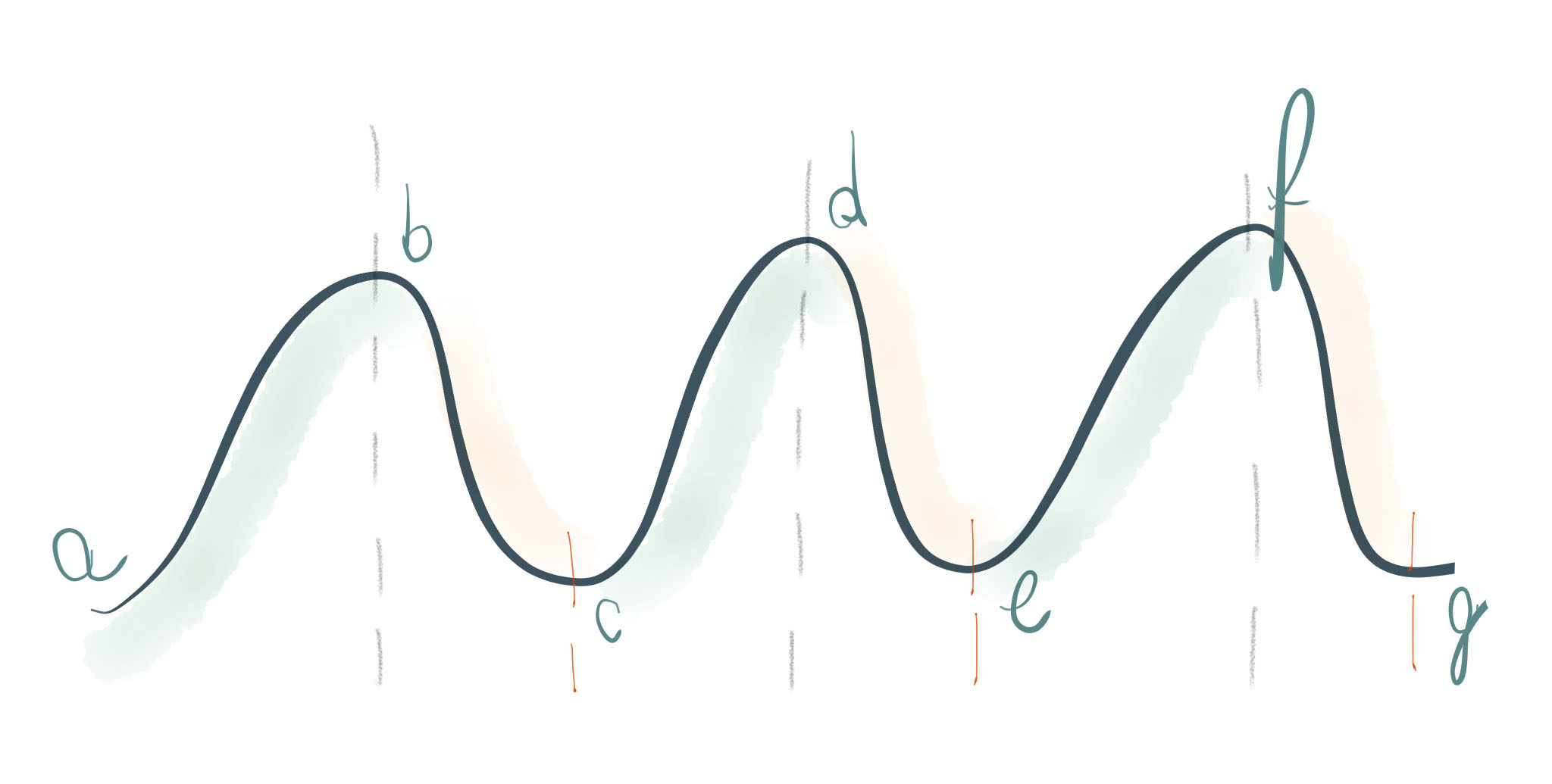
As you see, a, c, e, and g are quiet moments, and b, d, and f are climaxes.
By using the examples I have given you in this article, let’s say that “a” is the calm, welcoming ritual to the library, “b” is the moment when the scarfs fly in the air, “c” is the time when you and your audience are massaging the cloth on the ground and sitting on it. “D” will be the most exciting point of the first story you read, and “e” will be the end of the story. “F” is a movement-related activity between the first and the second story, “g” is the time when you rest from that activity and restart the reading.
The transitions between climaxes and quiet moments of rest — and vice versa — during a Storytime program may be the hardest times for some children.
Be careful with the clarity of your message. Ensure that everything that happens between the opening ritual and the first story, between story and activity, and, again, between activity and second story, is simple and has both a well-defined beginning and end. No young patron should be left in an unclear or abrupt situation where they may start wondering — or worrying — what’s going to happen next or why a specific action or activity had to be interrupted even if it was a lot of fun.
9. Inclusive Activities for Storytime
While visiting many Storytime sessions in library branches in different library systems nationwide, I’ve noticed that many librarians use a parachute as a final activity. When I asked why they play “parachute” at the end of Storytime, the large majority told me that a few children get disruptive while using that item. It’s hard to keep the environment safe and manage the rest of Storytime if the activity is placed in the middle of the program.
Considering the importance of movement, collaboration, interaction, self-regulation, and relationship for inclusive Storytime, you may like a no-cost new type of parachute you can build with your audience and use anytime during your program. It’s made of recyclable material: newspapers.
Building a newspaper “parachute” — Pennsylvania Library Association Children’s Librarians Conference 2018
Build your new parachute directly during Storytime. Invite your audience to form a big circle. Everybody helps lay as many sheets as necessary to cover the area within the circle on the ground. Connect the sheets using tape and make sure to leave some open spots in the texture. When this “big blanket with holes” is built, welcome every participant to grab the edge and lift it lightly and gently.
Experiencing the levity of a newspaper made “parachute” — PALA Children’s Librarians Conference 2018
Patrons will need time to handle the material’s fragility and get confident with the new experience. It feels very different from playing with a regular parachute. Instead of pulling and leaning back vigorously, this item can “fly” by holding and waving it very gently. Once your audience looks ready to move forward, you can invite some children and adults to crawl under the big paper blanket and enjoy the giant “floating” newspaper while lying on their backs. After this step, you can release a few small-sized balls on the surface and let them run across the big newspaper body.
Pennsylvania Library Association Children’s Librarians Conference, Hershey, 2018
Those who hold and move the blanket will start making sure that the balls keep moving; those who are lying or sitting under the newspaper blanket will begin collecting the balls that fall into the open spots and, most likely, will throw them back on top of the “parachute” through the same spots.
You can end this game by calmly collecting the balls, one after the other, by inviting people under the blanket to rejoin the crowd holding the edges of the blanket and guiding everyone to lay the giant newspaper on the ground. In doing so, the construction quickly turns into a newspaper carpet patrons can sit on to continue enjoying Storytime.
The “newspaper parachute” is a complete activity to foster participation, dialogue, movement, and sensory learning based on mutual trust, spatial organization, and social competence in groups.
If you are looking for one on one activities to set up in smaller groups and in particular to strengthen the relationship between child and caregiver, you may want to implement the Body Xylophone.
Photo: Ann-Sophie Fjellø-Jensen
The original instrument I designed is made of light wood of different sizes and two mullets built using twigs and old squash balls.
Body Xylophone and relationship. Houston, TX, The Parish School. Photo: Amanda Arnold
The first target groups were children whose behavior seemed withdrawn and isolated or children who may have experienced sensory processing disorder. The idea was to foster enjoyment through percussion and pleasure in perceiving the whole body through oscillations
Many librarians asked me to develop a less “dangerous” body xylophone considering the liability rules a public library system has to follow. We solved the issue by using parts of cardboard boxes folded in a shape that mimics a double harmonic box.
Photo: Ann-Sophie Fjellø-Jensen
Watch Embodied Learning Video
How to Build a Body Xylophone
Photo: Ann-Sophie Fjellø-Jensen
The Body Xylophone is a fantastically interactive instrument that offers multiple creative and useful ideas in an environment designed for growing early literacy experiences. Sound and vibration, connected with the coordination and dialogue of different parts of the body, are at the core of the process of discovering one’s own voice and vocabulary.
Read the Embodied Learning - Queens Public Library Case Study
Zero-budget Learning Environments for Young Children in Libraries
10. No-Book Inclusive Storytime
I’d love to share two ideas for those who are looking for more inclusive, interactive, and effective alternatives to the easel, to provide a more experiential Storytime.
How a Story is built
If you think that your audience would appreciate more guidance through the narration of a story, you can always add building blocks as a visible and tangible tool that beats the time of the events scattered across the book’s pages.
While reading, when you’re about to turn the first page, grab a large size building block that you put next to you or you’ve hidden behind you in advance and place it on the ground between you and your audience.
Photo: Ann-Sophie Fjellø-Jensen
Then turn the page and continue reading. The next time you have to turn the page, grab a medium size building block and add it on top of the large size one.
Photo: Ann-Sophie Fjellø-Jensen
Then turn the page and continue reading. The next time you have to turn the page, grab a medium size building block and add it on top of the large size one.
At the end of the story, you’ll have built a tower that shows the structure of the whole story.
Photo: Ann-Sophie Fjellø-Jensen
Photo: Ann-Sophie Fjellø-Jensen
Photo: Ann-Sophie Fjellø-Jensen
Photo: Ann-Sophie Fjellø-Jensen
Photo: Ann-Sophie Fjellø-Jensen
Photo: Ann-Sophie Fjellø-Jensen
Alternatively, you can look for stories whose illustrations match or are reminiscent of your blocks and use these also as characters. My favorite is Pezzettino by Leo Lionni.
Photo: Ann-Sophie Fjellø-Jensen
Early Literacy in Plexiglass
In the infinite variations of how to tell or read a story during inclusive Storytime, you can add this version with plexiglass tiles.
Photo: Ann-Sophie Fjellø-Jensen
It’s all about selecting story elements you want to build into the narration, paint them on plexiglass, and use these transparent, combinable layers to invent or play a story.
Photo: Ann-Sophie Fjellø-Jensen
“Plexiglas Stories” are a great way to invite children to relax and invent their own stories while lying comfortably on the ground, fostering their senses, coordination, and creativity. Transparency helps the storyteller — you during Storytime, children once you decide to leave the plexiglass props in yoChildren’sn’s Room — to connect with the audience, interact calmly, and enjoy the freedom of changing a story following either imaginative or more rational pathways.
Photo: Ann-Sophie Fjellø-Jensen
Send me your feedback or questions about the implementation of these ideas.
Check out Embodied Learning professional development trainings for children's librarians:
Reinventing the Children’s Room in Public Libraries

